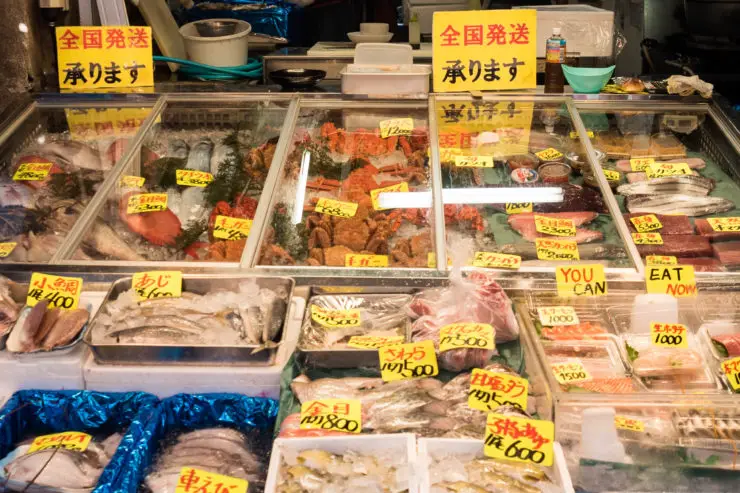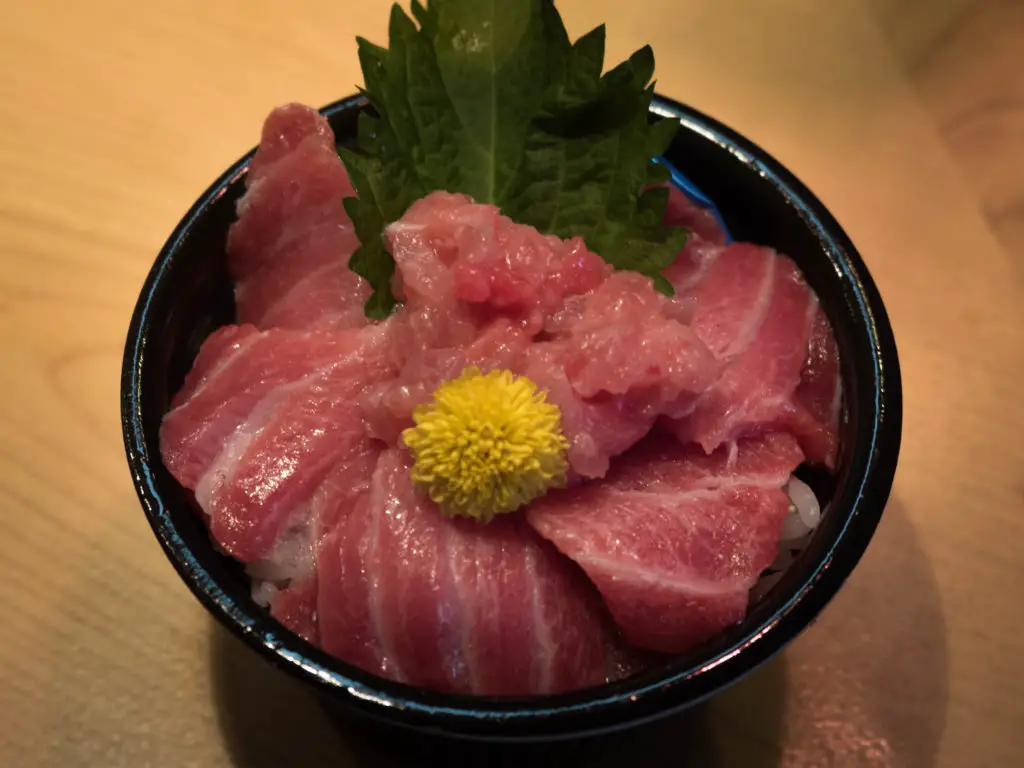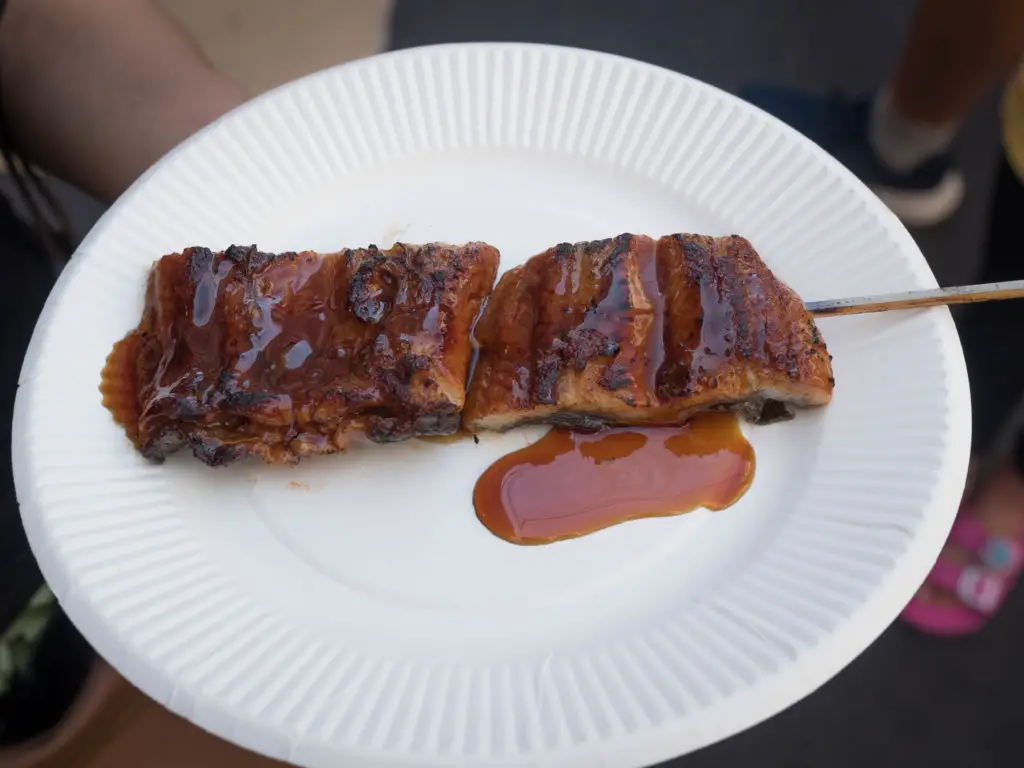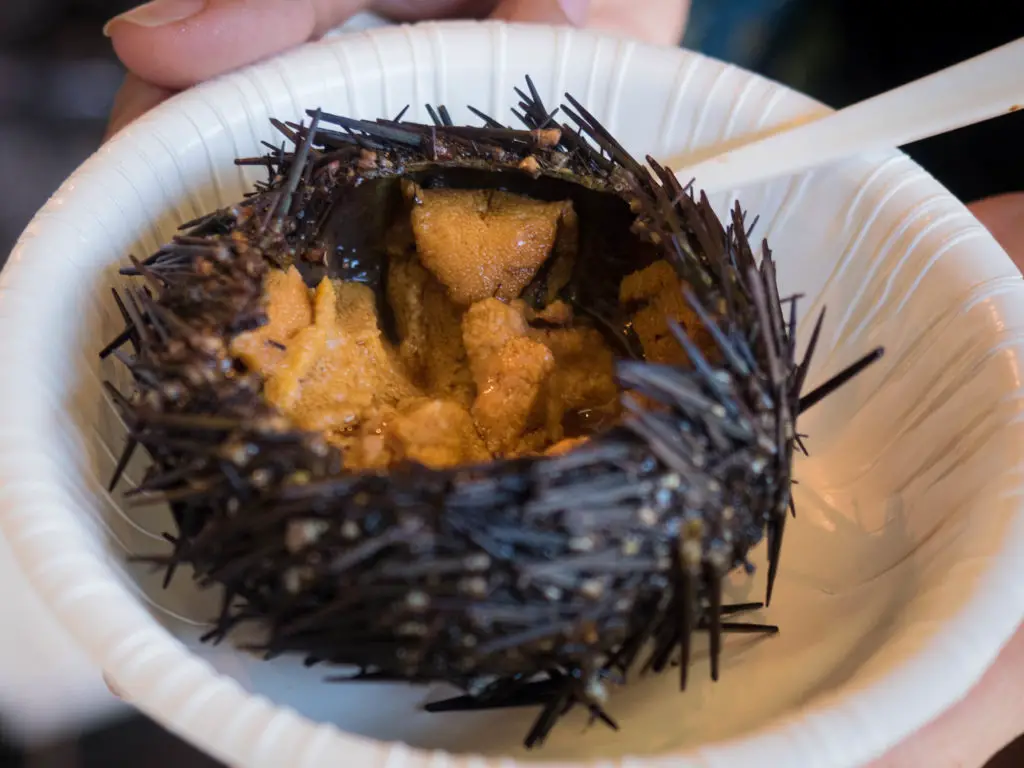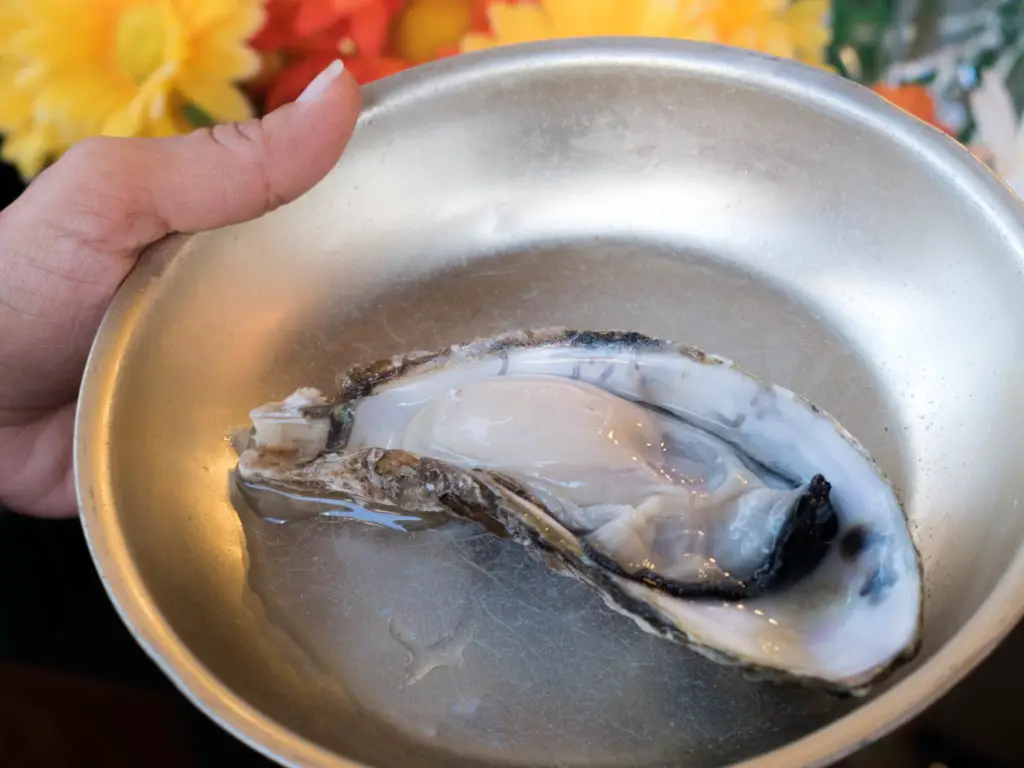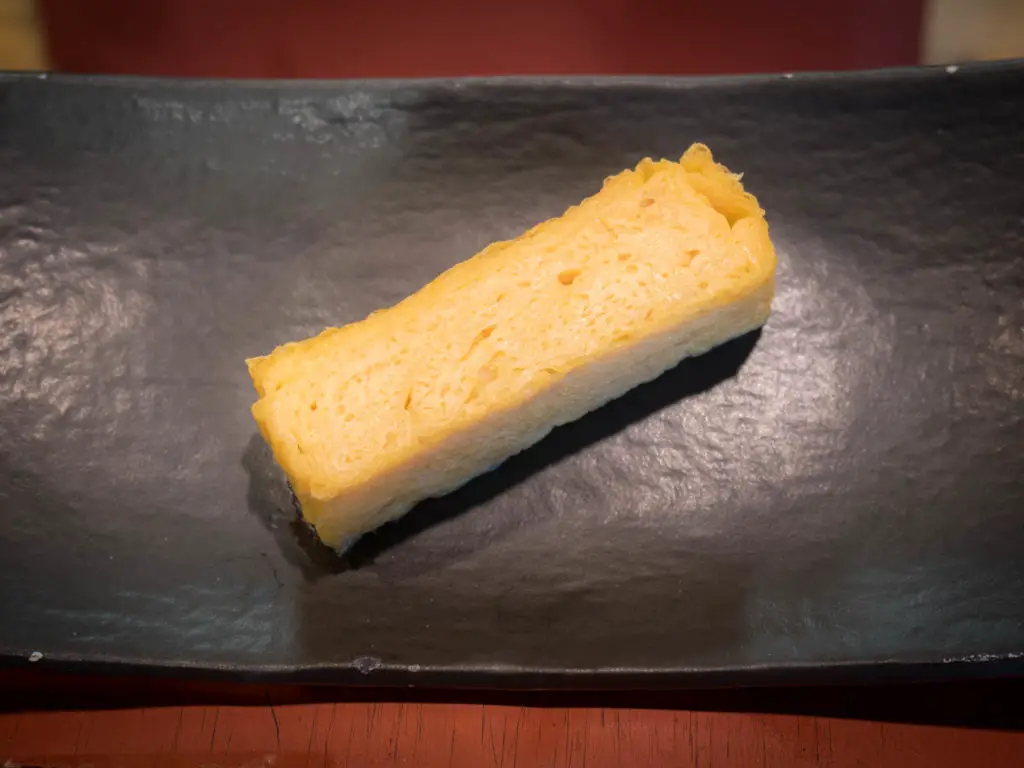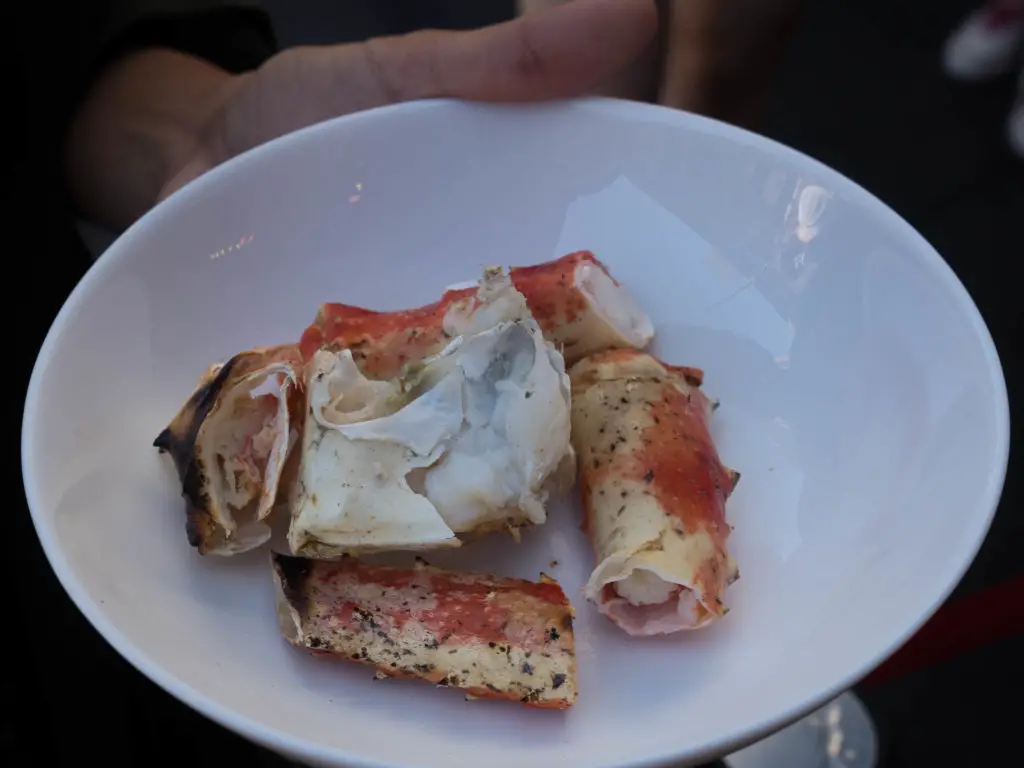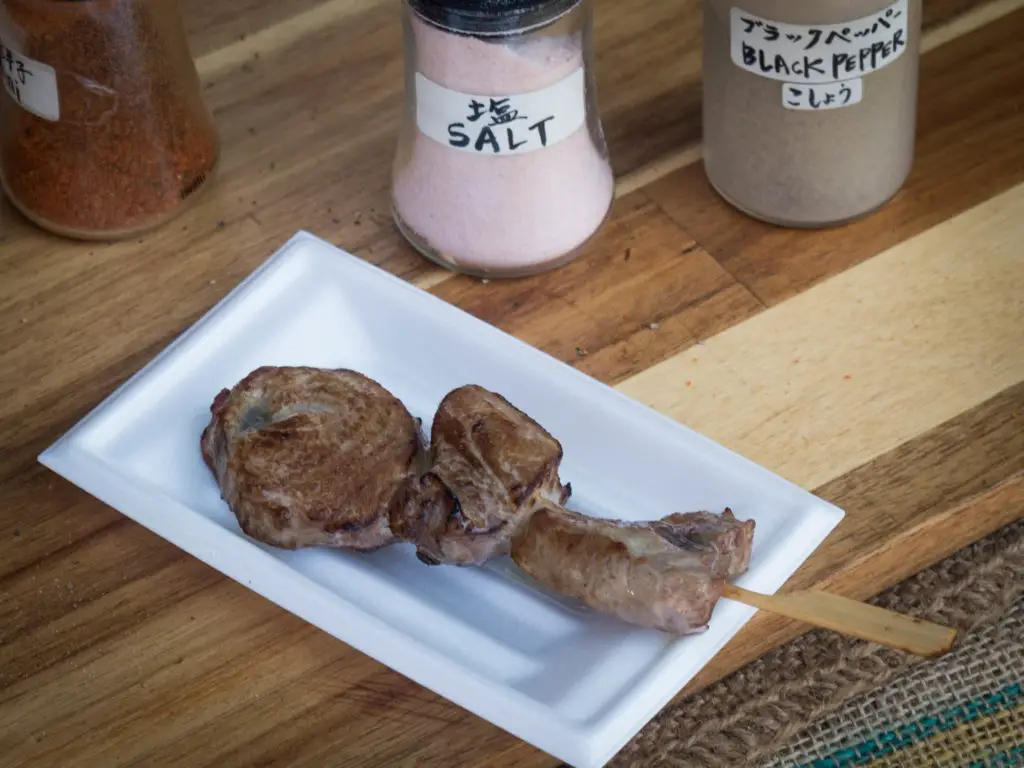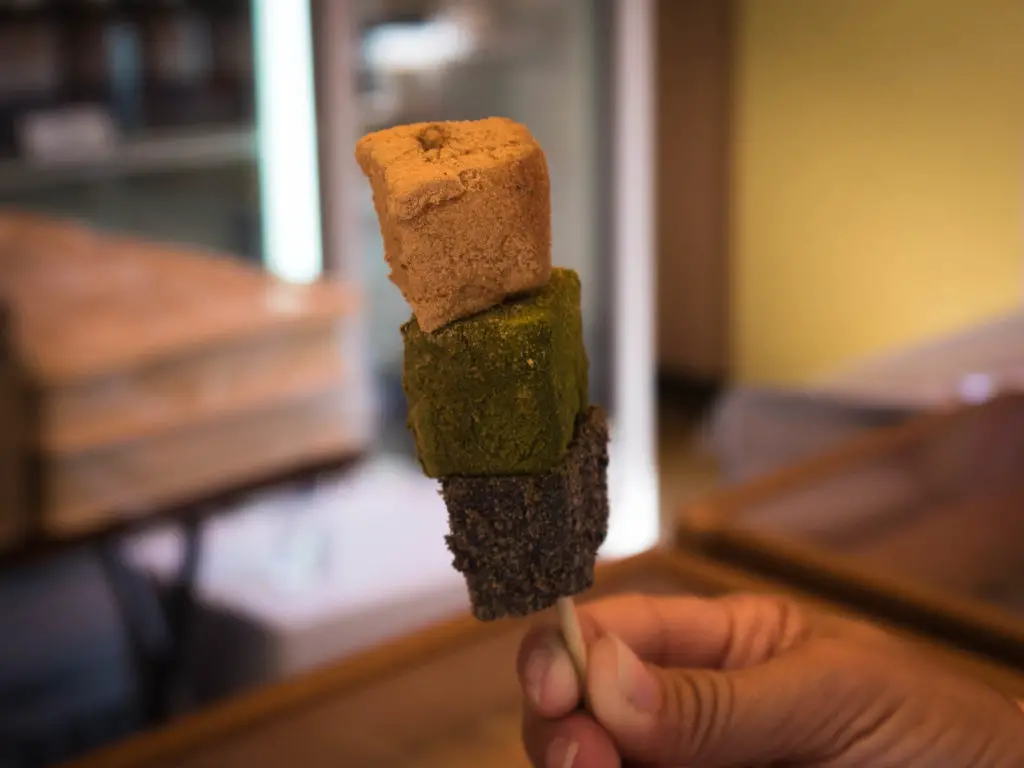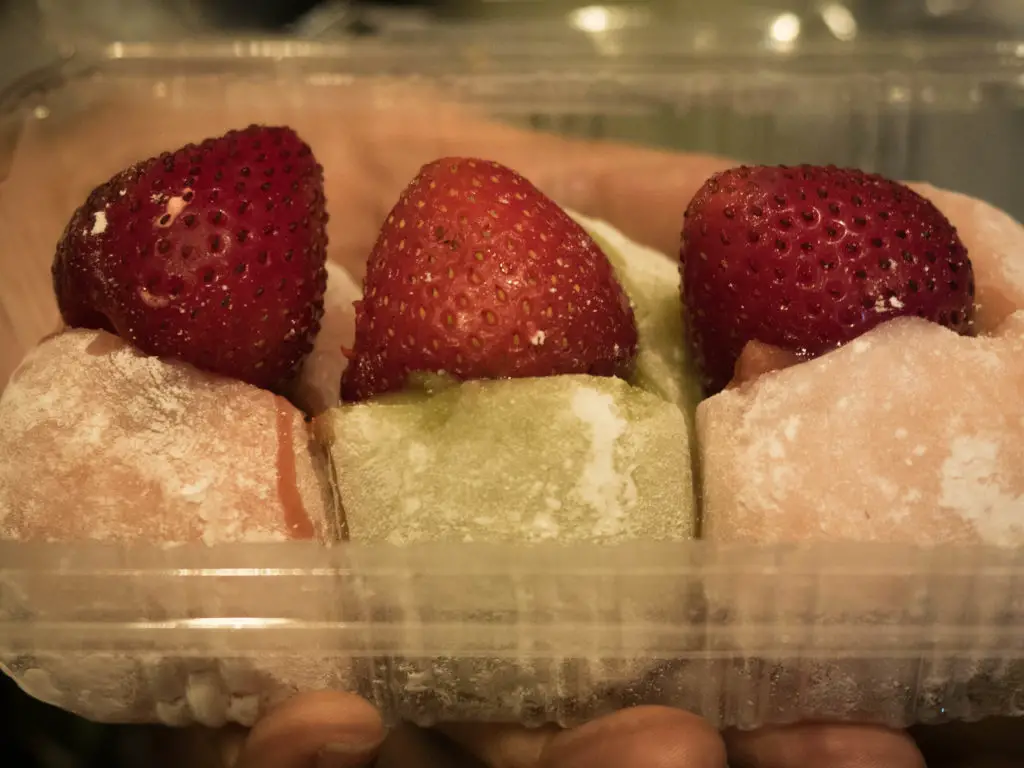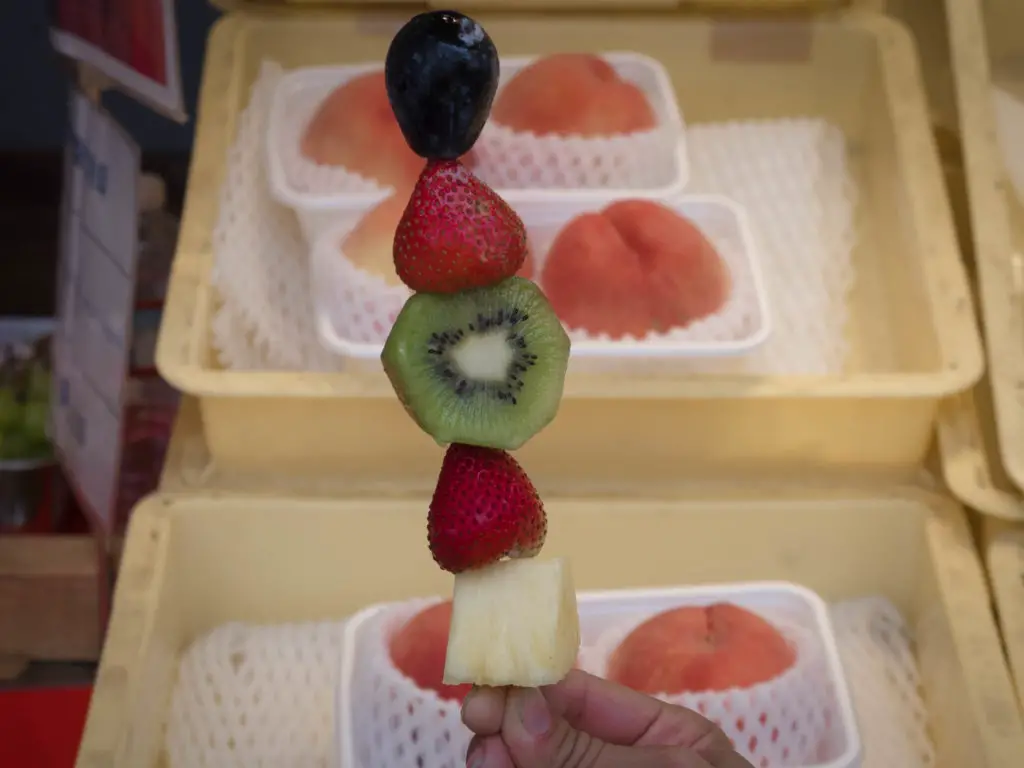As an Amazon Associate I earn from qualifying purchases. Please read the disclaimer for more info.
The massive Tsukiji Fish Market is one of Tokyo’s, if not Japan’s, great attractions, and is certainly a “must-visit” destination for food lovers. There are so many tasty street food snacks to eat at Tsukiji Market, we ended up visiting the market twice!
Historically, the “inner” workings of the market, which included the early morning tuna auctions you may have heard about, was located next door, before being relocated to the nearby Toyosu Fish Market. Luckily the “outer” market still exists, where you will find a grid of small laneways full of sushi restaurants, traders selling fresh seafood and cooking accessories (including some amazing looking knives), and stalls offering an array of delicious street food snacks.
If you are planning to visit, I recommend you arrive at 9am when most of the stalls open, and before the main crowds arrive. This will give you a better chance to wander around the laneways at your own pace, taking in all that this part of Tsukiji Fish Market has to offer.
Top 10 Street Food Snacks at Tsukiji Fish Market.
Otoro Bowl
The first place we headed to when we arrived at Tsukiji outer market, was to a famous stall called Maguroya Kurogin. They specialise in blue fin tuna.
I wanted to start my market experience with one of their specialties, the Otoro Bowl, and joined the end of the long queue to wait for my turn to order.
Otoro is the fattiest part of the tuna, and comes from the lower belly of the fish towards the head. It is highly sought after in sushi restaurants and can command some eye watering prices.
The price here for a few slices of otoro and some rice was 1,800 Yen ($16).
The tuna was outstanding. It instantly melted on my tongue, and the fattiness left a rich and creamy taste in my mouth.
A great start to the day.
Grilled Freshwater Eel (Unagi)
Freshwater eel, unagi in Japanese, is usually an expensive item to eat in Japan. So, when I saw it being cooked over coals by the skewer, I knew I had to have some.
This eel was perfectly grilled with a nice char on the outside, whilst being soft and slightly juicy on the inside. It had a rich taste but wasn’t too fishy.
It was covered with a sweet thickened soy sauce and I admit I ate it a little bit too quickly.
At 200 Yen ($1.80) it was an absolute bargain.
Sea Urchin (Uni)
One of the greatest delicacies from the ocean is sea urchin, known in Japanese as uni.
Inside the prickly black shell are small pieces of a yellow, custard like substance. The taste of sea urchin is complex, with a creamy and briny taste of the sea.
There are many different vendors selling sea urchin and prices seemed to vary. This sea urchin cost us 500 Yen ($4.50), although I saw the same size being sold for twice that amount.
Fresh Oysters
If you like freshly shucked oysters, then you’re in luck. If you like huge freshly shucked oysters, then Tsukiji Market will keep you super happy.
These oysters can be found, freshly shucked and sitting on ice, ready to be consumed all over the outer market. Sizes range from large to huge, and it took me 3 bites to consume this one.
The oysters come with a sauce, and although I tasted it, I preferred the oyster as nature intended. Delicious.
Prices tend to vary depending on size of the oyster, and we paid 500 Yen ($4.50) for two large oysters.
Tomago (Sweet Egg Omelette)
Given most people visit Tsukiji Market early in the morning, a great way to start the day is to have a Tamago, a Japanese sweet egg omelette.
The technique for making a tamago (grilling and layering thin sheets of egg, before rolling them into a tube shape), leaves a wonderfully light and fluffy texture.
The omelette is both savoury and sweet and this is due to the addition of mirin and dashi to the egg mixture.
There are many places selling this tasty street food snack at Tsukiji Market, and at 100 Yen (90c) each, it’s an absolute steal.
Barbecued Japanese Spider Crab
Japanese spider crabs are a creepy and scary looking creature. But they lose a lot of that intimidation when they are being grilled over hot coals.
We could smell the aroma of these crabs being cooked on the barbecue from a number of stalls away. And we couldn’t resist buying a portion to eat.
The flesh of the crab was sweet and juicy, and married perfectly with a touch of smoke from the barbecue.
It was relatively expensive at 2,000 Yen ($18), but sometimes it’s difficult to avoid the draw of freshly cooked crab.
Tuna grilled in garlic oil
From a distance, I thought the vendor was setting a blow torch to a piece of beef. But upon closer inspection, it was tuna. In between the bursts of heat, the vendor was dipping the tuna into a shallow bowl of oil heavily laced with garlic.
This left a stick of tuna that was slightly charred and a little crispy on the outside, while being tender on the inside with a hint of garlic.
It was even tastier with a sprinkling of black pepper.
Warabimochi
The first sweet(ish) treat we tried was Warabimochi, a chewy, jelly-like mochi confection, that had been dusted with a light flour.
We decided to try the “mix”, which had 3 different flavours, being soybean (kinako), matcha, and black sesame.
This stick of three was 250 Yen ($2.25).
Strawberry Puff (Ichigo Daifuku)
Now, this delicious treat was probably the prettiest of the street food snacks we ate all day at Tsukiji Market. It was certainly the most “insta” friendly.
It’s called Ichigo Daifuku, and is a popular Japanese sweet. The daifuku part is a mochi confection that is usually filled with anko, a red bean paste. In this case a strawberry (ichigo) added to the top.
Each bite of the plump Ichigo Daifuku is chewy and light, with a burst of juiciness when biting into the strawberry at the same time. It felt very decadent.
Each one of these delicious morsels cost 400 Yen ($3.60). The stall is part of the fruit corner (see below) that sits in the middle of the outer market.
Fruit Stick
Okay, I’ve never reviewed a fruit stick before. But this is Japan, and fruit is super expensive. Think 3,000 Yen ($27) for a large bunch of grapes, expensive.
At 800 Yen ($7.20), this fruit stick consisted of two strawberries, one piece of kiwi fruit, one piece of pineapple, and a grape. Not just any grape, but a Shine Muscat seedless grape.
These special grapes are produced in Okayama, and are in season from July to October each year, which coincided with our visit.
So, how did the fruit on a stick stack up? The strawberries, kiwi fruit, and pineapple were all sweet, juicy, and hit the spot.
The grape? Well, I remember thinking at the time that it may have been the best grape I’d ever eaten. Maybe it was the thought of how expensive it was, but it was amazing none-the-less.
You will find an assortment of fruit, along with other sweet treats such as the Inchigo Daifuku and the warabimochi (above), in the centre of the outer market.
Conclusion
If you find yourself in Japan, I highly recommend a visit to this amazing market. We really enjoyed strolling through the outer section of Tsukiji Market and eating as many different street food snacks as we could.
Enjoyed this post? Get more delivered straight to your inbox, SPAM free, but not expensive fruit free
The Roaming Fork is a participant in the Amazon Services LLC Associates Program, an affiliate advertising program designed to provide a means for sites to earn advertising fees by advertising and linking to amazon.com, amazon.co.uk, amazon.ca, amazon.com.au. Amazon and the Amazon logo are trademarks of Amazon.com, Inc. or its affiliates.

